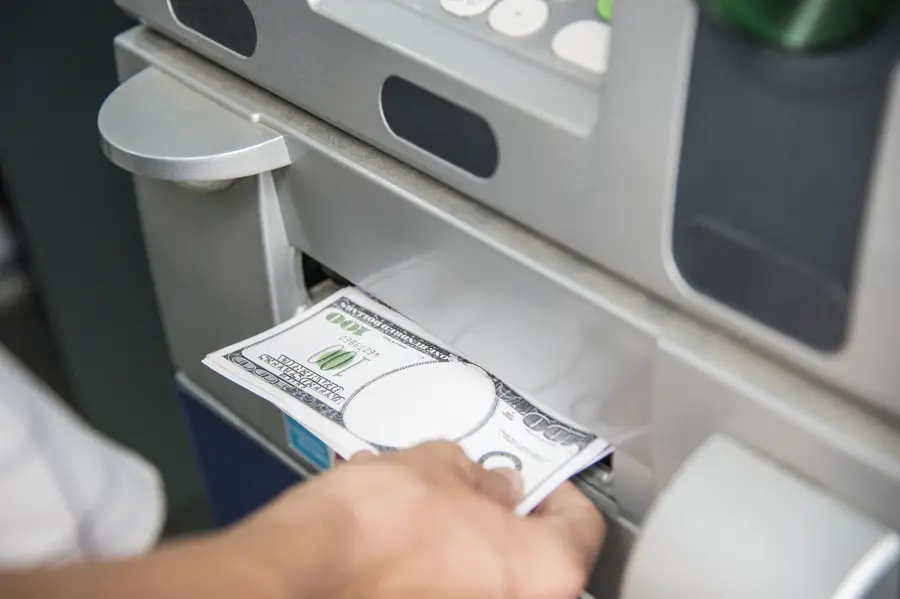
Automated Teller Machines (ATMs) have become an integral part of our daily lives, providing us with quick and convenient access to cash. While many of us use ATMs regularly, have you ever wondered how much money is stored in these seemingly unassuming machines? The world of ATMs is a fascinating one, filled with intricate processes and security measures to safeguard the substantial amount of money they hold.
The Anatomy of an ATM:
To understand the financial magnitude stored in ATMs, it’s crucial to delve into the anatomy of these devices. ATMs consist of various components, such as the cash dispenser, vault, card reader, and the central processing unit. The cash dispenser is where the money is stored and dispensed, making it the heart of the ATM.
ATM Cassettes:
The cash dispenser in an ATM contains cassettes, which are secure containers that hold banknotes of various denominations. The number of cassettes in an ATM can vary, and each cassette can hold a specific amount of cash. Financial institutions can configure the cassettes based on their preferences and the expected usage patterns of a particular ATM location.
Capacity and Configuration:
The capacity of an ATM, i.e., the total amount of money atm hold, is determined by factors like the number of cassettes, the denomination mix within each cassette, and the overall design of the cash dispenser. High-traffic areas may have ATMs configured with larger capacities and a variety of denominations to meet the diverse cash needs of users.
Security Measures:
Given the significant sums of money stored in ATMs, security is paramount. ATMs are equipped with robust security features, including surveillance cameras, access control systems, and tamper-evident technology. The vault containing the cash dispenser is constructed with materials designed to resist vandalism and unauthorized access.
Cash Management:
Banks and independent ATM operators employ sophisticated cash management systems to ensure that ATMs are adequately stocked while minimizing the risk of running out of cash or holding excessive amounts. Automated processes help monitor cash levels in real-time, triggering alerts and actions when replenishment is needed.
Remote Monitoring and Management:
In the digital age, ATMs are not merely standalone machines but integral parts of vast networks. Remote monitoring and management systems enable financial institutions to track the status of their ATMs, detect issues, and perform diagnostics without physical intervention. This connectivity enhances efficiency and allows for prompt responses to potential problems.
Diversity of Usage:
The amount of money stored in an ATM can vary significantly based on its location and the demographics of its users. ATMs in urban centers or areas with higher footfall are likely to dispense more cash regularly, necessitating frequent replenishment. In contrast, ATMs in quieter suburbs or rural locations may not require as much cash, impacting the overall amount stored.
Cash Recycling:
Some modern ATMs are equipped with cash recycling technology, allowing deposited cash to be reused for withdrawals. This innovative feature not only reduces the need for frequent replenishment but also optimizes the utilization of cash within the ATM. Cash recycling ATMs contribute to improved efficiency in managing and storing money.
The Financial Impact:
While specific figures on the exact amount of money stored in an ATM at any given time are not readily available due to security concerns, we can estimate the financial impact by considering the number of ATMs globally and their average cash holding capacity.
As of the last available data, there were millions of ATMs worldwide, collectively holding trillions of dollars. The distribution of these ATMs varies across regions, with densely populated areas having a higher concentration. The cumulative wealth stored in ATMs is a staggering reflection of the cash requirements of a globalized society.
Conclusion:
ATMs are not just cash dispensers; they are intricate financial hubs that cater to the diverse needs of individuals across the globe. The substantial sums of money stored in ATMs underline the critical role they play in providing access to cash, especially in times of urgency or when digital transactions are not feasible.
The evolution of ATMs, from basic cash dispensers to technologically advanced, interconnected devices, showcases the constant innovation in the financial industry. As we continue to witness advancements in technology and changes in banking habits, the role and significance of ATMs in storing and managing money are likely to evolve further, shaping the future of accessible and secure financial services.





